Looking for some of the best and easiest methods to avoid powdery mildew in the spring? Believe it or not, it’s actually easier than you might think to keep this disease at bay!
Powdery mildew is the most common and recognizable group of fungal diseases for plants. It affects not only vegetables but many different flowers, too. There are many different types of powdery mildew but they each affect plant in the same fashion.
You can spot powdery mildew by its iconic patches of fuzzy grayish-white, powdery-like appearance. You can usually notice it on the top of leaves and foliage but it can also affect the undersides as well.
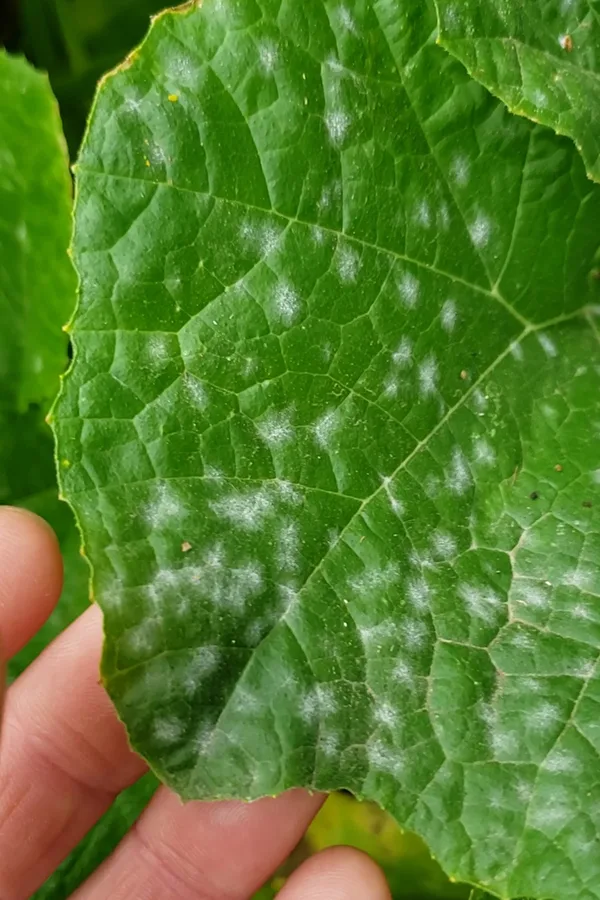
In fact, powdery mildew doesn’t just grow on the plant’s foliage. You can also see it on the stems, buds, flowers, and even the fruit of affected plants.
Powdery mildew is often associated with cucurbits like squash, pumpkins, melons, and cucumbers. However, certain varieties of the fungi can also affect tomatoes, peppers, eggplants, beans, and peas.
About Powdery Mildew Disease
Powdery mildew thrives in temperatures of 60 to 80º Fahrenheit (15-27º Celsius). You usually see it affecting gardens and plants during the spring and fall months. As the weather starts to warm up in the spring, the fungi start to release tiny spores.
Unlike most fungi, these spores thrive in warm, dry climates. High humidity during the night allows the spores to spread more easily. You are also more apt to have a powdery mildew issue if you grow plants in shady locations.
The fungi spores easily get carried by the wind, rainwater, birds, and animals. Once they land on host plants, the infection begins – and it’s often hard to eradicate.
The disease isn’t always deadly to the plants thankfully. However, a severe case will cause foliage to dry up and eventually fall off. This can be devastating for plants that rely on their foliage for photosynthesis to produce fruit and vegetables. In addition, a powdery mildew infection puts undue stress on plants, especially on new, tender foliage.
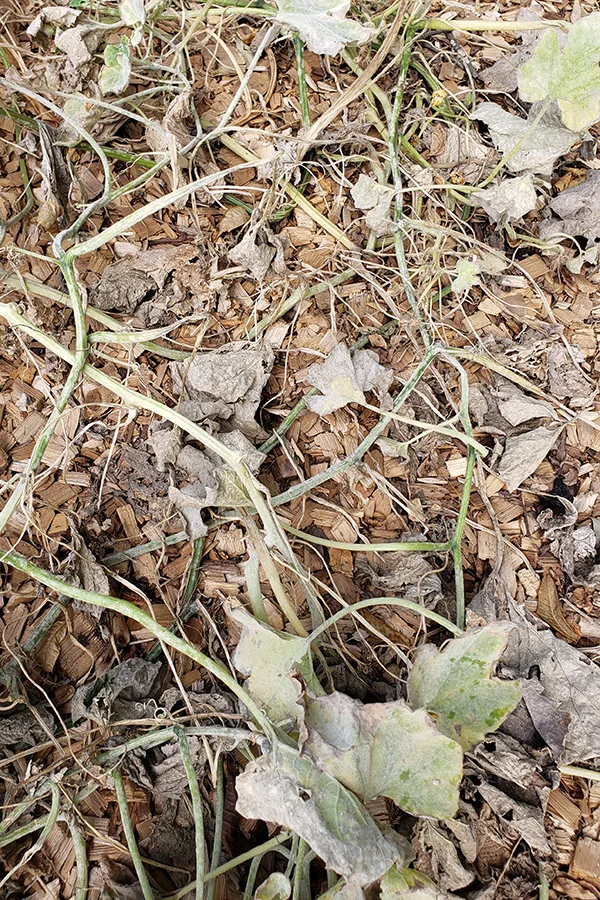
Once you start to see the spots on the plant’s foliage, it is often difficult to prevent it from spreading further and causing more destruction. That’s why taking steps to avoid powdery mildew is key to having healthy and damage-free plants.
How To Avoid Powdery Mildew In The Spring
The best way to combat powdery mildew is to not let it invade your garden in the first place. Take the following steps to ensure you have the best chance of having a healthy and productive garden this spring – and beyond.
Properly Clean Up Last Year’s Garden
Powdery mildew fungus is able to survive winters when it is left on host plant debris from your fall garden. As the weather warms up the following spring, the fungi once again release their spores. The unfortunate process begins all over again.
To help ensure that your spring garden isn’t affected by last year’s fungi diseases, you need to properly clean out your garden in the fall. This involves completely removing and either burning or disposing of plant material that is affected by powdery mildew.
Do not leave the decaying and dead plant material to overwinter in your garden. A few minutes of extra work in the fall will help avoid a whole host of issues and diseases in the spring beyond just powdery mildew.
You also don’t want to add the affected materials to your home compost piles either. They just can’t heat up enough to completely kill the fungi.
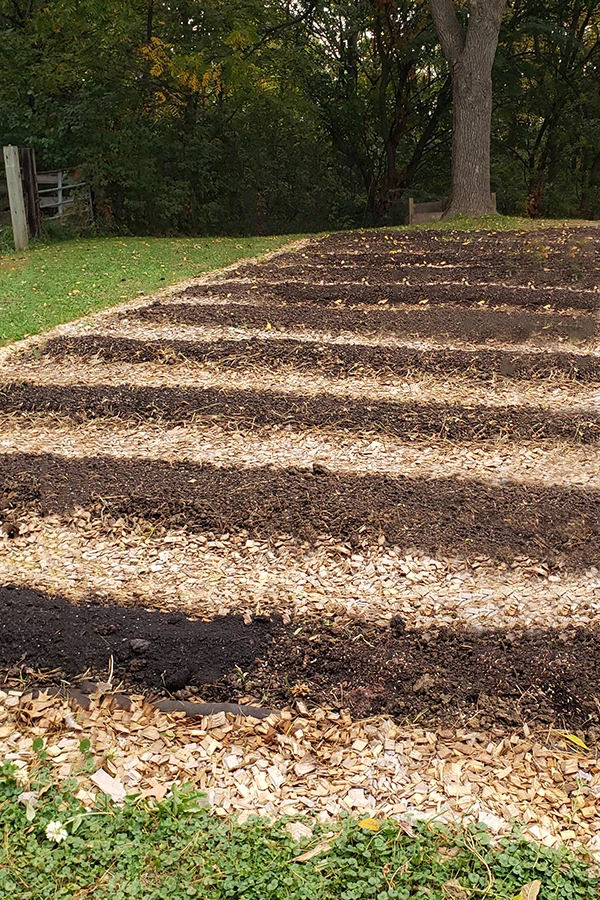
Purchase Resistant Seeds
No plants are completely immune to powdery mildew. However, you can choose varieties that were created to be resistant to fungi. This is one of the easiest ways to help avoid powdery mildew in the spring – before you even plant your garden.
Using resistant seeds or plants is critical if your growing location doesn’t receive full sun or if you have struggled with powdery mildew issues in the past. Thankfully, most major seed companies sell resistant seed and plant varieties.
Boston Pickling Cucumbers, Honeynut Squash, and Contender Bush Beans are all specifically resistant to powdery mildew. They will provide you with less of a chance of contracting the fungi from the get-go.
Choose Your Planting Location Carefully
For plants that are often the biggest targets for powdery mildew, be sure to plant them in locations that receive full sun. This means the area needs to get at least 8 hours of sun each day during the spring and summer months.
Aim for the early morning sun if you have the option. The early warmth of the sun allows the morning dew to quickly dry out and helps avoid the spores from spreading as easily. Again, while the fungi thrive in dry environments, high relative humidity also increases your chances.
Prune And Thin Properly
Another way to help avoid powdery mildew in the spring is to keep proper spacing in mind when planting. If you do plant extra seeds, be sure to thin them so that plants have the appropriate spacing once they mature. Refer to your seed packet or other proper spacing guidelines when planting.
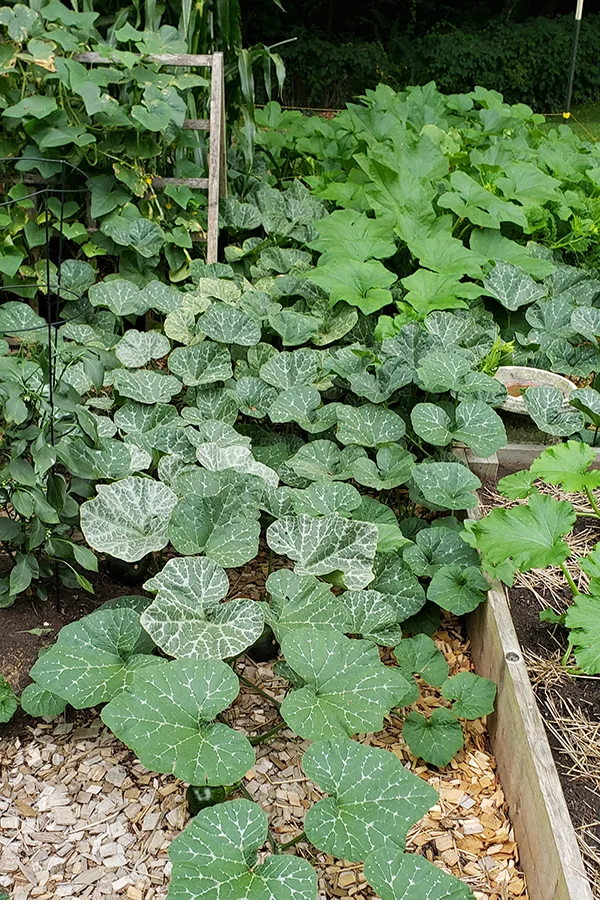
Pruning back overgrown plants also will help to allow better air circulation around plants. This helps to prevent higher humidity levels around plants and their foliage. In addition, pruning will allow the sunlight to reach more parts of the plant’s foliage.
Pruning is especially important for vining plants that can get really overgrown and out of hand quickly. If you can’t see all of the leaves of a squash plant, then the chances are higher that they can contract powdery mildew.
Proper Watering
Although you have no control over mother nature and the rain, you do have control over when and how you water your garden plants.
Whenever possible, avoid watering your plants at night. This is not only important to avoid powdery mildew in the spring, but all growing season long. Increasing the moisture level during the cooler nighttime hours will increase the relative humidity – creating the perfect atmosphere for spores to take hold.
In addition, overly wet soil and foliage during the night can cause all sorts of other issues besides powdery mildew. Instead, water early in the morning to allow the sun’s rays to dry out plants naturally.
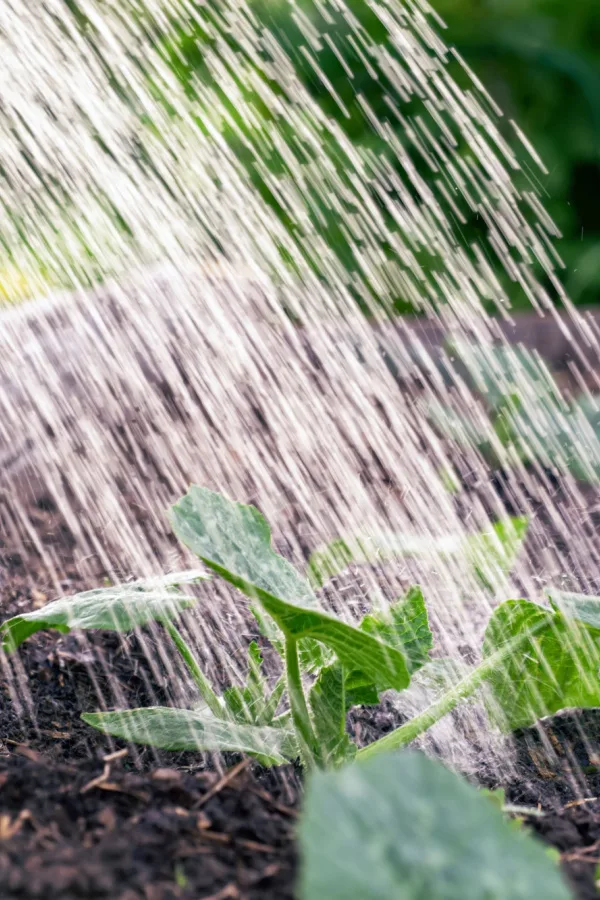
Also, try to avoid watering overhead if possible. If you do have powdery mildew spores on your plants, they can easily transfer to healthy plants from water droplets. Water at the base of the plants whenever possible.
Adding Mulch
Adding mulch around your plants has a whole arsenal of benefits such as soil temperature regulation, snuffing out weeds, and helping to retain moisture.
Another added benefit of using mulch is that it helps prevent plant matter from touching possibly infected soil. If the soil around your plants has powdery mildew spores, then they can easily transfer to healthy plant tissue by touching or water transfer. Using mulch helps to keep the plants not only cleaner but healthier as well.
What To Do If You See Powdery Mildew
Even if you have tried all of the above advice, it might not be enough to avoid powdery mildew altogether in the spring. If that is the case and you start to see the tell-tale signs of the circular, powdery white spots, there are some steps you can take to help prevent its spread.
First, carefully remove any affected parts of the plant. Dispose of those items away from your garden and compost pile. Do not leave the plant tissue in your garden – otherwise, it will just continue to spread.
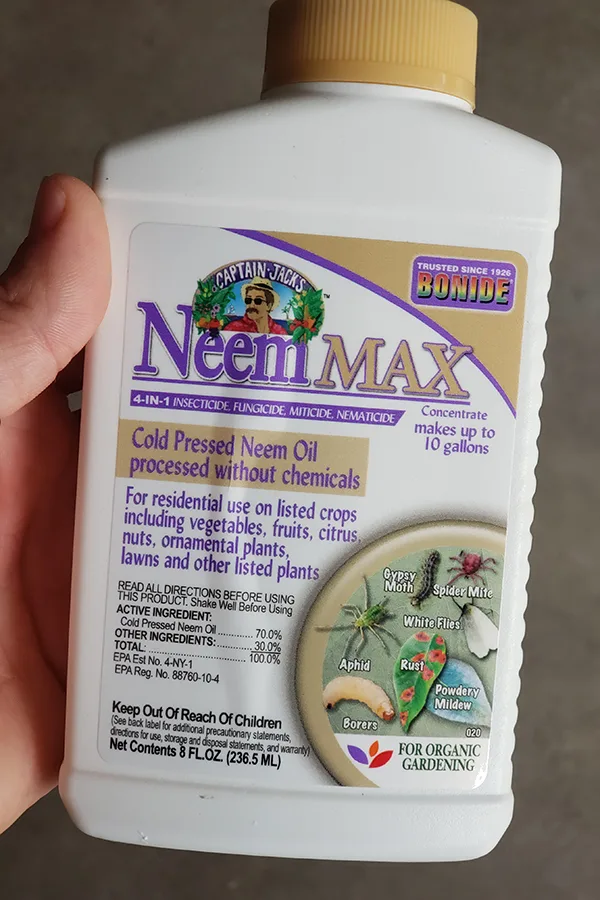
Use neem oil to spray down plants and help slow down or prevent the spread. Neem oil is not harmful to plants and can help with mild powdery mildew issues (in addition to several pest and insect issues as well). Create an organic spray using warm water, neem oil, and a few drops of dish soap. Refer to the bottle for exact measurements. (Product Link: Captain Jacks Neem Oil)
Lastly, avoid fertilizing plants during an outbreak of powdery mildew. New, tender growth is much more susceptible than older foliage so avoid encouraging new plant growth during infections.
Hopefully, with these tips and tricks, you will be enjoying a healthy and productive, powdery mildew-free garden this spring!
Follow Our Facebook Page For Even More Great Tips! Simple Garden Life Facebook Page
Simple Garden Life is a website dedicated to keeping gardening fun, simple and enjoyable! We publish two new articles each week along with a new garden podcast episode every two weeks. This article may contain affiliate links.
